Advanced Statistics
Expert Agent's existing Statistics are powerful and comprehensive. Too comprehensive, maybe! They contain over 90 rows of statistical data and we're conscious that managers and business owners can't see the wood for the trees as a result. Advanced Stats lets you choose the required rows and save your choice in a profile for later use. So, if you want to get weekly property-only stats, you can now create a profile (using relative dates such as "first of this month" rather than 1st March) and rerun it every week. You can create as many Advanced Stats profiles as you want and we think you'll probably create a handful to handle your various reporting needs.
Another big innovation is that once the Advanced Stats appear on the screen, you can click through to see the raw data. So, if advanced stats tells you that you've had 5 new instructions this week, you can click through to a grid containing the 5 records.
We've called the new option Advanced Statistics to reflect the fact that we plan to continuously improve it over the coming months. Please test it and log any issues that you find as support tickets.
To get started, click Advanced Statistics under Tools at the Expert Agent Touch main menu
Getting Started with Advanced Statistics
You need to be a SuperUser to access any stats (or a standard user that a superuser has given statistics access to - see Agency Staff). Like all stats in EA, data sharing permissions determine which branch data within your own empire you can see.
Click on Tools >Advanced Statistics as below:

Create Stats Profiles
You'll need a Stats Profile to extract your stats. Each profile contains the required dates, the required rows of data (examples of rows are no of valuations, valuation conversion ratio, no of new instructions), the required offices or staff and the required format
You can create as many Stats Profiles as you want. We don't supply any pre-configured profiles - you'll need to set them up yourself. If you are not sure what is available, run the standard stats.
Click 1. Add Profile and work through the numbered steps below:
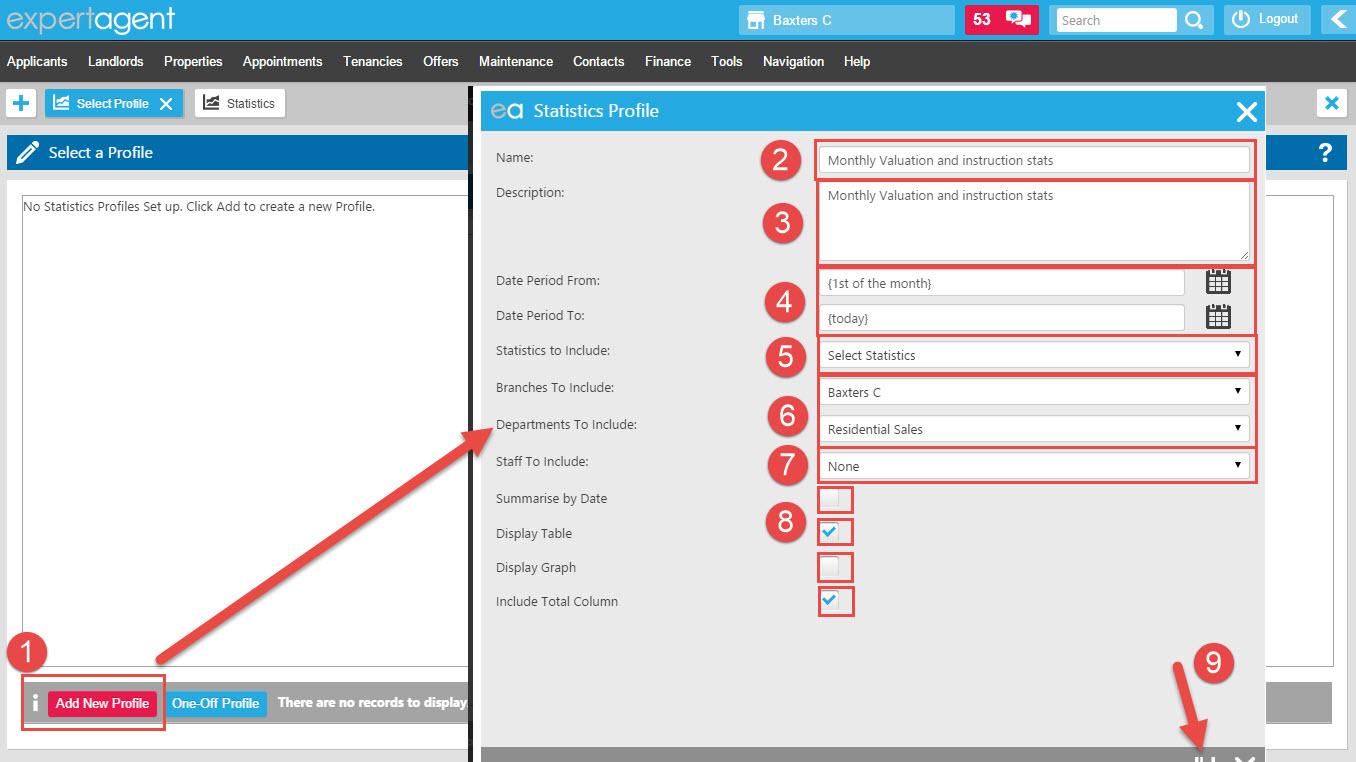
2 & 3. Name your new profile and give it as description
4. Choose the required dates. Clicking in here pops up Expert Agent's Relative Dates Form. Select Relative Dates (1st of this month, 3 months ago etc where possible.

5. Statistics to include is where you choose the required rows of data ( (examples of rows are no of valuations, valuation conversion ratio, no of new instructions). Tick the required rows in the form below. There's a search box at the top to help you. So, to find all the applicant row options, put applicant in the search box.
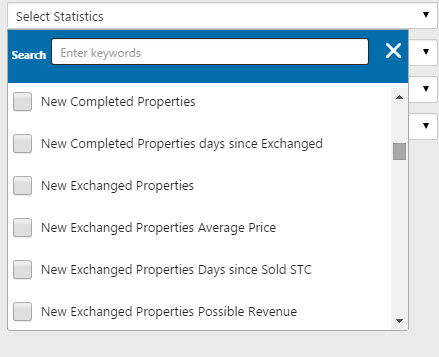
We've created a list of the rows that are available with a specific definition to help you understand how each one is collated - see the What are the definitions for the Statistics option? FAQ.
6. Choose the required departments and branches from the pull down lists
7. Choose the required Staff
8. if you want one set of figures for the time period in question (so for example 3 months worth in one set of numbers), leave summarise by date unchecked.
If you want to separate the figures, tick the box and choose year by year, month by month, week by week or day by day.

Then, decide if you want a table or a graph.
You'll be able to go back and change all of this later
Press Save when ready and your profile will be applied and the results displayed.
Using Saved Profiles
When you go back into Tools-> Advanced Stats having saved a profile or two, you'll see them displayed as below.
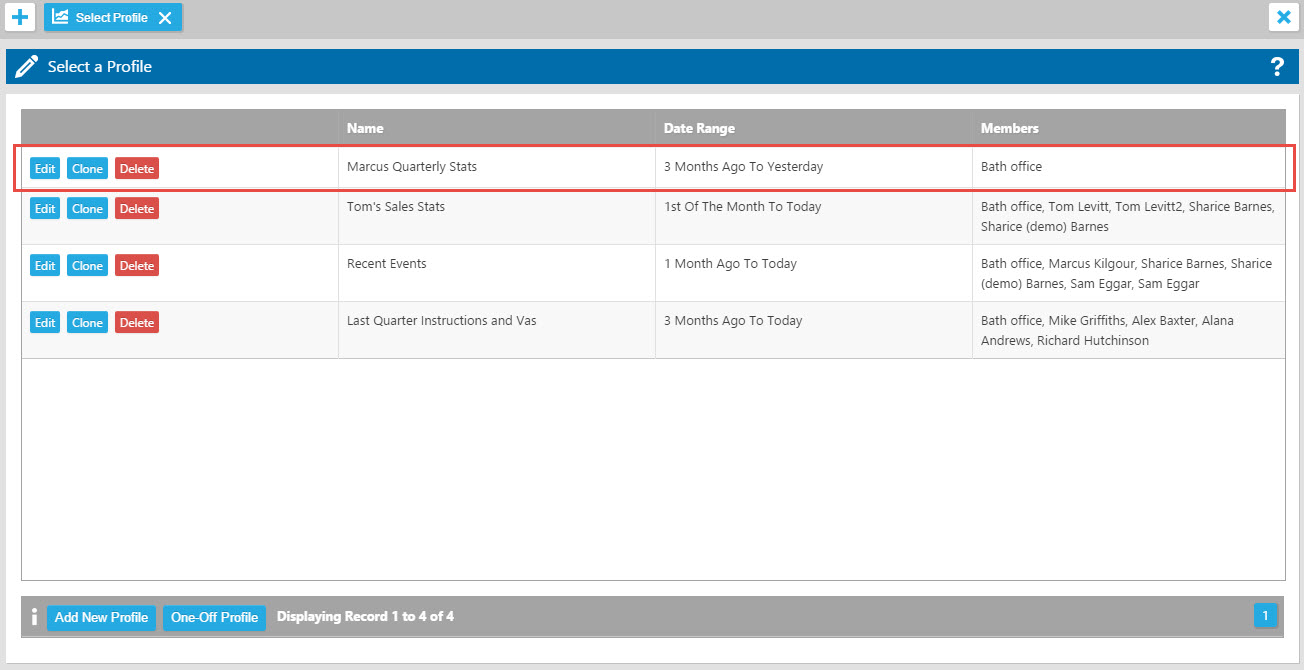
Just click on the profile you want to use.It will open its results in a new page tab. You can then open another tab if required, go to Tools-> Advanced Stats and open up additional profiles.
The Select a Profile option also lets you edit, delete or clone a profile. Clone is particularly useful if you want to quickly set up several similar profiles.
Advanced Statistics Results
When you first create a new stats profile and save it or when you click on a stats profile, the results will appear as below in either a table or a graph
Example Table
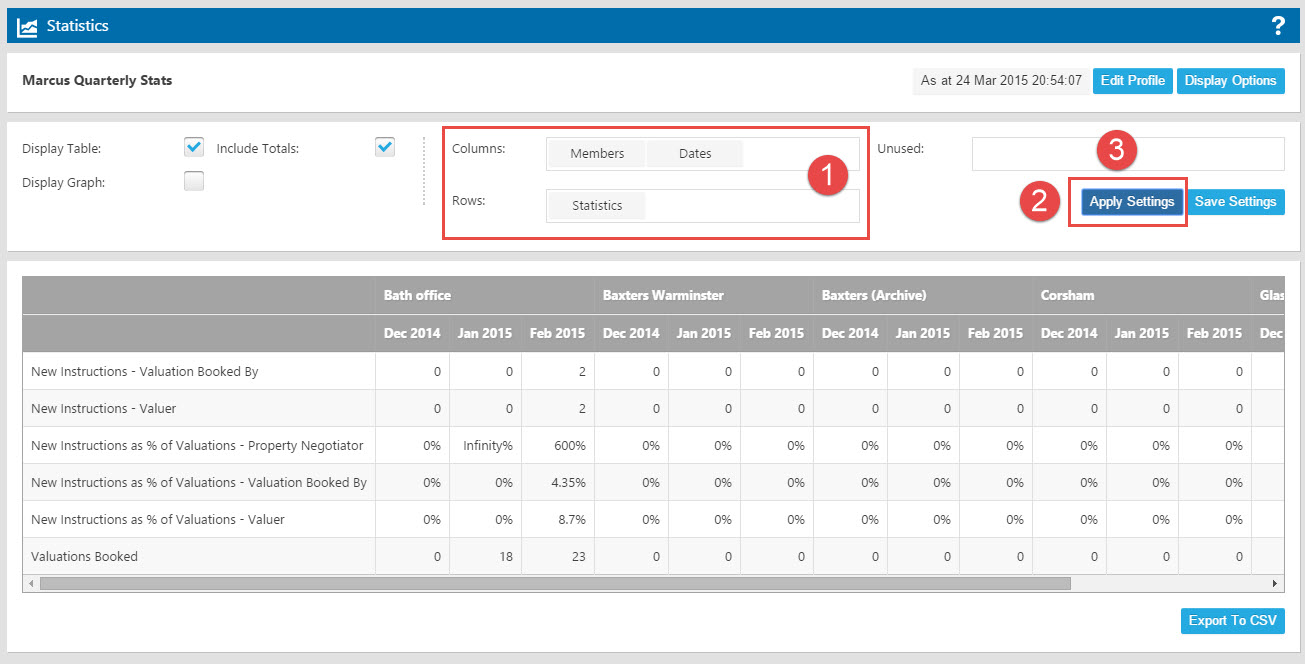
The section marked (1) above is very clever. It lets you change the format of the table for an instant results comparison. So, the example above has summarise by date ticked in the profile and so shows different columns for each month beneath each member (a member is a branch and/or negotiator). If you click on the word dates in (1) and drag it to (2) unused then (3) apply, you'll see the table change - the Dec 2014, Jan 2015 etc columns will disappear.
Clicking on any element that is a simple number (so, the numbers in the first 2 rows in the example above) rather than a calculated result (3rd, 4th and 5th rows), Expert Agent opens a grid containing the records in question in a new page tab, allowing you to debug the results.
Export to CSV immediately downloads your results - in Chrome, you should see the downloaded file in the bottom left hand corner of your browser.
If you choose Save Settings, your changes get saved to the profile that you are using.
Example Graph
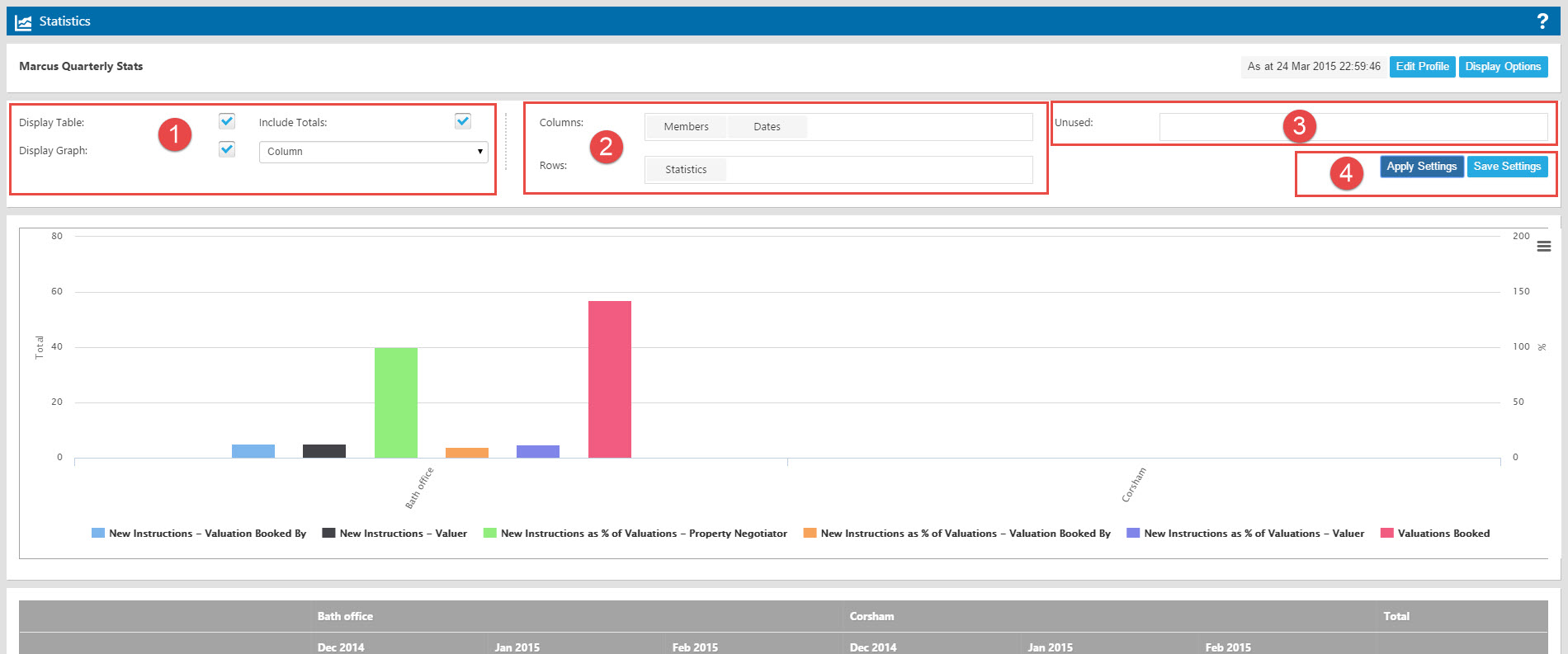
In this example, we have ticked both graph and table.
You can choose a different graph format in (1), above. Our example shows a column graph but there are lots of other options - just choose one from the dropdown and choose (4) apply
You can print or copy the graphs by clicking the 3 vertical bars button in the top right corner of the graph.
The section marked (2) above is very clever. It lets you change the format of the table for an instant results comparison. So, the example above has summarise by date ticked in the profile and so shows different columns for each month beneath each member (a member is a branch and/or negotiator). If you click on the word dates in (2) and drag it to (3) unused then (4) apply, you'll see the graph and table change - the Dec 2014, Jan 2015 etc columns will disappear. Very Clever!
Export to CSV immediately downloads your results - in Chrome, you should see the downloaded file in the bottom left hand corner of your browser.
If you choose Save Settings, your changes get saved to the profile that you are using.

 Login
Login

